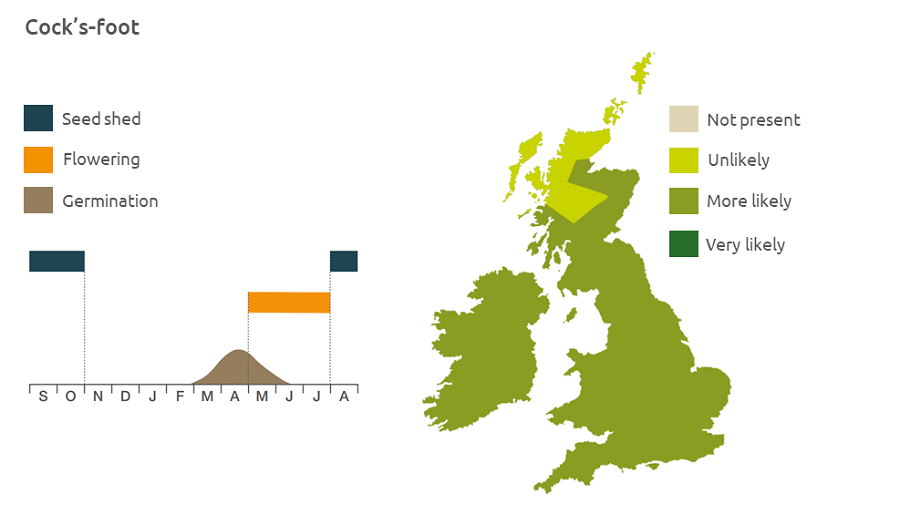- Home
- Knowledge library
- Distribution and biology of cock’s-foot in the UK
Distribution and biology of cock’s-foot in the UK
Cock’s-foot is a grass weed that may remain in arable fields having been sown as agricultural grass. Find out how to identify and control it.
Overview
Cock’s-foot (Dactylis glomerata) is sown as an agricultural grass and may be present in arable fields after ploughing.
It remains green all winter. It mainly reproduces by seed which can persist from 2–3 years on the soil surface. Seed set is high and the fruit fairly mobile.
- It has value to biodiversity
Description
It is a large, densely tufted, perennial grass of coarse appearance, 30 cm to 1.2 m tall. There are many strains, with differing growth habits. The broad leaf blades have a prominent ridge on the undersides and are often bluish-green in colour. The flowerheads are often triangular and appear densely packed.
Key features
Plant: The stems are flattened, especially at the base.

Location and life cycle

Geographic distribution
Cock’s-foot is usually found in meadows, pastures, waste ground, roadsides, or field edges. It grows to an altitude of 700 m.
Soil type
It is found on a wide range of fertile, neutral or alkaline soils.
Seed statistics
- Seed longevity: 1–5 years
- Seed weight: 2 mg
- Seeds/head: 100
Management
Although it is often found in first-year cereals after grass, it seldom persists in routinely cultivated soils. It is best controlled at the time of grass destruction or in fallow.
For advice on herbicides, please speak with your agronomist or adviser.
When was this information last updated?
This page is based on content from the encyclopaedia of arable weeds publication. Since it was first released in 2008, the publication has been redesigned several times but not revised. However, it remains a good foundation for general information on the distribution and biology of weeds.

